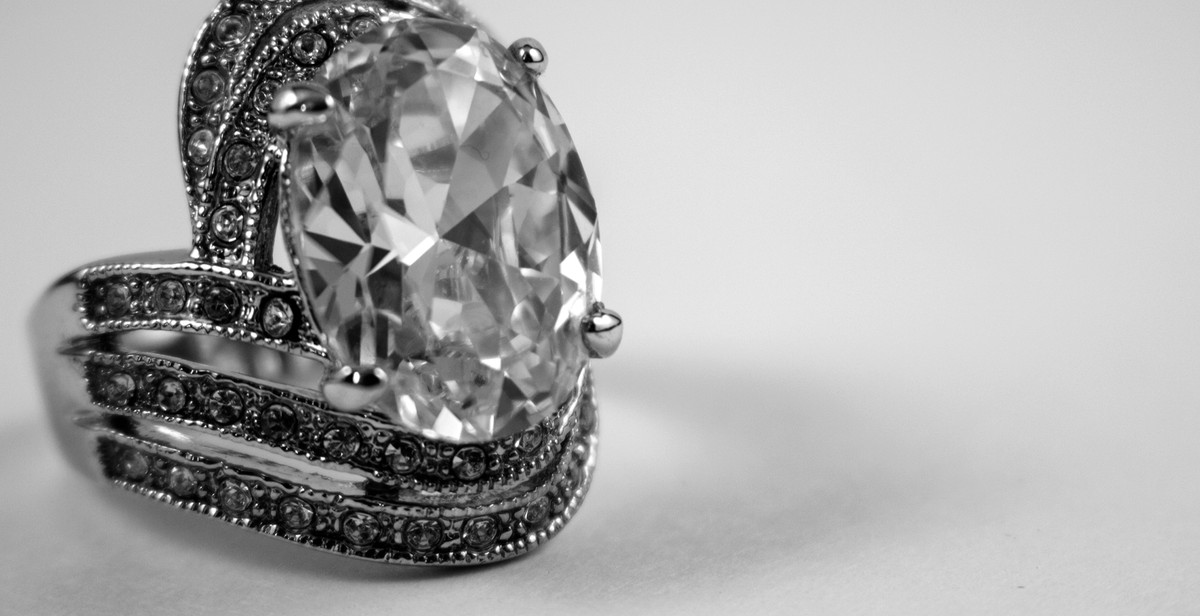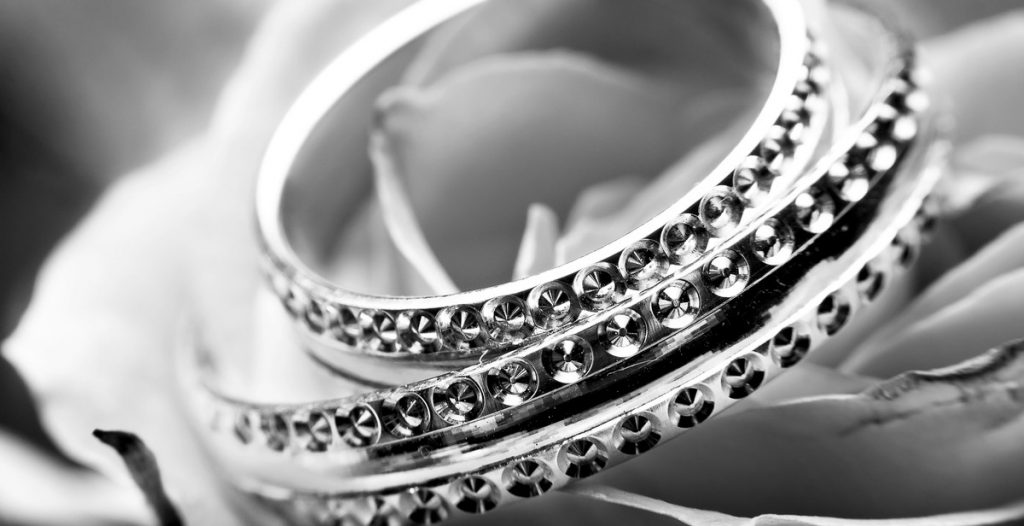What is the difference between white gold and platinum?
White gold and platinum are two popular metals used to make jewelry. They have a similar appearance, but they are different in terms of composition, durability, cost, and maintenance. Understanding the differences between these two metals can help you make an informed decision when buying jewelry.
Composition
White gold is an alloy made by mixing pure gold with other metals such as nickel, zinc, and palladium. The amount of pure gold in white gold is measured in karats, and it typically ranges from 14k to 18k. Platinum, on the other hand, is a pure metal that is naturally white and does not require any alloys to achieve its color.
Durability
Platinum is a denser and heavier metal than white gold, which makes it more durable and resistant to scratches and wear. White gold, on the other hand, is softer and more prone to scratches and damage. However, white gold can be plated with rhodium to enhance its durability and give it a brighter shine.
Cost
Platinum is a rare and precious metal that is more expensive than white gold. The cost of platinum jewelry is usually higher than that of white gold jewelry, and it can vary depending on the purity and weight of the metal.
Maintenance
White gold and platinum require different maintenance routines. White gold jewelry needs to be replated with rhodium every few years to maintain its brightness and prevent discoloration. Platinum, on the other hand, does not require any plating or special maintenance, and it develops a natural patina over time that adds to its beauty.
Overall, the choice between white gold and platinum depends on your personal preferences, budget, and lifestyle. Both metals have their unique characteristics and advantages, and choosing the right one can ensure that your jewelry lasts for a long time and looks beautiful.
What is White Gold?
White gold is a popular metal used in jewelry making. It is an alloy, which means it is a combination of two or more metals. White gold is typically a mixture of gold and other white metals, such as nickel, silver, or palladium.
Composition and Properties
The composition of white gold can vary depending on the manufacturer and the intended use. However, most white gold jewelry is made up of around 75% pure gold, mixed with 25% other metals. The most common metals used in white gold are nickel, silver, and palladium.
White gold has a silvery-white color and is often used as a substitute for platinum. It is a durable metal and is resistant to tarnishing and scratching. White gold is also hypoallergenic, making it a popular choice for those with sensitive skin.
Pros and Cons
One of the main advantages of white gold is its affordability compared to platinum. White gold is a more budget-friendly option for those who want the look of platinum but cannot afford the higher price tag.
However, one of the downsides of white gold is that it requires regular maintenance. White gold is typically plated with rhodium to enhance its shine and whiteness. Over time, this plating can wear off, causing the white gold to appear yellowish or dull. To maintain its appearance, white gold jewelry needs to be re-plated with rhodium every few years.
White Gold Jewelry
White gold is a popular choice for engagement rings, wedding bands, and other types of jewelry. It is a versatile metal that can be used in a variety of styles and designs. White gold is often set with diamonds or other gemstones to create a stunning and timeless piece of jewelry.
When shopping for white gold jewelry, it is important to look for pieces that are high-quality and well-made. A reputable jeweler can help you choose the right piece of white gold jewelry that fits your style and budget.
| Pros | Cons |
|---|---|
| Affordable compared to platinum | Requires regular maintenance |
| Durable and resistant to tarnishing and scratching | May cause skin irritation for some individuals |
| Hypoallergenic |

What is Platinum?
Platinum is a precious metal that is highly valued for its rarity, durability, and beauty. It is a dense, malleable, and ductile metal that has a silvery-white color. Platinum is one of the rarest metals on earth, and it is estimated that all of the platinum ever mined could fit into a single room.
Composition and Properties
Platinum is a chemical element with the symbol Pt and atomic number 78. It is a member of the platinum group of elements, which also includes palladium, rhodium, ruthenium, iridium, and osmium. Platinum has a high melting point of 1,768 degrees Celsius and a boiling point of 3,825 degrees Celsius. It is highly resistant to corrosion, tarnishing, and wear, making it an ideal metal for jewelry and other applications.
Platinum is also a highly dense metal, with a density of 21.45 grams per cubic centimeter. This density makes it more durable and resistant to scratches and dents than other metals commonly used in jewelry, such as gold or silver.
Pros and Cons
One of the main advantages of platinum is its durability and resistance to wear and tear. Platinum jewelry is known for its ability to maintain its luster and shine over time, making it a popular choice for engagement rings and other fine jewelry pieces. Additionally, platinum is hypoallergenic, making it a great choice for those with sensitive skin.
However, one of the main drawbacks of platinum is its high cost. Platinum is one of the most expensive metals used in jewelry due to its rarity and the difficulty of mining and refining it. Additionally, platinum is a heavier metal than gold, which can make it less comfortable to wear for some people.
Platinum Jewelry
Platinum is a popular choice for engagement rings, wedding bands, and other fine jewelry pieces. Its durability and resistance to wear and tear make it an ideal metal for jewelry that will be worn every day. Platinum is also a great choice for those who want a metal that will hold up well over time and maintain its luster and shine.
Platinum jewelry is available in a variety of styles and designs, from simple and classic to more elaborate and ornate. It is often used in combination with diamonds and other precious gemstones to create stunning and timeless pieces of jewelry.
| Pros | Cons |
|---|---|
| Highly durable and resistant to wear and tear | Expensive due to rarity and difficulty of mining and refining |
| Maintains luster and shine over time | Heavier than other metals, which can be less comfortable to wear |
| Hypoallergenic, making it a great choice for those with sensitive skin |

Differences between White Gold and Platinum
White gold and platinum may look similar, but they are different metals with distinct properties. Here are the main differences between the two:
Color and Appearance
White gold is an alloy made by mixing pure gold with white metals such as nickel, palladium, or silver. The resulting metal has a silvery-white color, but it may have a slight yellow tint depending on the amount of gold in the alloy. To enhance its whiteness, white gold is often coated with rhodium.
Platinum, on the other hand, is a naturally white metal that doesn’t require any coating. It has a unique luster that is different from white gold. Platinum is also heavier than white gold, which makes it feel more substantial when worn.
Durability and Maintenance
Both white gold and platinum are durable metals, but they have different properties that affect their maintenance requirements.
White gold is harder than platinum, which makes it more resistant to scratches and dents. However, it is also more prone to wear and tear over time, and may require rhodium plating to maintain its color and shine.
Platinum, on the other hand, is a softer metal that is more prone to scratches and dents. However, it is also more durable in the long run, and its scratches can be easily polished out. Platinum doesn’t require any coating or plating, and it doesn’t tarnish or fade over time.
Cost and Affordability
White gold is generally less expensive than platinum. The cost of white gold depends on the purity of gold in the alloy, as well as the other metals used in the mixture. The cost of platinum, on the other hand, is determined by its rarity and purity.
However, it’s worth noting that the cost of maintaining white gold may add up over time, as it may require rhodium plating every few years. Platinum, on the other hand, doesn’t require any maintenance and retains its value over time.
| White Gold | Platinum | |
|---|---|---|
| Color and Appearance | Silvery-white, may have yellow tint | Naturally white, unique luster |
| Durability | Harder, more resistant to scratches and dents | Softer, more prone to scratches and dents |
| Maintenance | May require rhodium plating to maintain color and shine | Doesn’t require any maintenance |
| Cost and Affordability | Less expensive, but may require maintenance | More expensive, but retains value over time |
Conclusion
Both white gold and platinum are popular choices for engagement rings and wedding bands. While they may look similar, there are several differences between the two metals that should be considered before making a purchase.
Price
White gold is generally less expensive than platinum, making it a more affordable option for those on a budget. However, it is important to note that the price of white gold can vary depending on the purity of the gold used.
Durability
Platinum is a more durable metal than white gold, making it a good choice for those who lead an active lifestyle or work with their hands. It is also a great option for those who want a piece of jewelry that will last a lifetime.
Color
White gold has a warmer tone than platinum, which has a cooler, almost grayish-white hue. Some people prefer the warmer tone of white gold, while others prefer the cooler tone of platinum.
Maintenance
White gold requires more maintenance than platinum, as it needs to be re-plated with rhodium every few years to maintain its white color. Platinum, on the other hand, does not require any special maintenance.
In the end, the choice between white gold and platinum comes down to personal preference and budget. Both metals have their own unique qualities and benefits, and it is important to carefully consider these factors before making a decision.
| Factor | White Gold | Platinum |
|---|---|---|
| Price | Less expensive | More expensive |
| Durability | Less durable | More durable |
| Color | Warmer tone | Cooler tone |
| Maintenance | Requires re-plating | No special maintenance required |

